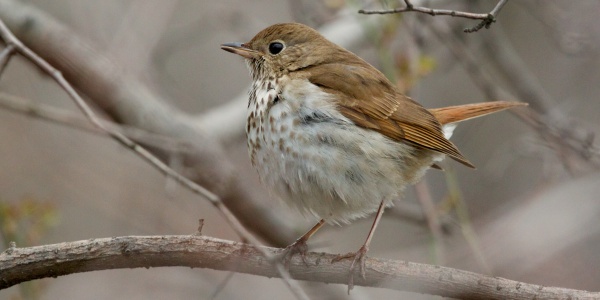Facts About Hermit thrush
The hermit thrush is a captivating medium-sized bird native to North America. Unlike other migratory thrushes in the region, it has a closer kinship with the Mexican russet nightingale-thrush. Its scientific name, *Catharus guttatus*, translates to "spotted" in Latin, aptly describing its appearance. These birds measure approximately 15 to 18 cm in length, weigh between 18 and 37 grams, and feature a distinctive white-dark-white pattern on their underwings.
Hermit thrushes breed in the coniferous and mixed forests of Canada, southern Alaska, and parts of the northeastern and western United States. While many migrate to the southern U.S. and Central America for the winter, some endure the harsher conditions of northern coastal U.S. states and southern Ontario.
One of the most enchanting aspects of the hermit thrush is its song, often celebrated as "the finest sound in nature." It possesses an ethereal, flute-like quality that begins with a single note, followed by several descending musical phrases in a minor key, each repeated at varying pitches.
The hermit thrush is opportunistic in its feeding habits. It forages on the forest floor, in trees, and in shrubs, consuming a diet rich in insects and berries. Though primarily breeding in forests, they can also be found in parks and wooded suburban areas during winter. Occasionally, these birds even make rare appearances in Western Europe and Northeast Asia.
For those interested in the scientific details, a study by Winker and Pruett in 2006 titled "Seasonal migration, speciation, and morphological convergence in the avian genus *Catharus* (Turdidae)" provides deeper insights into their migration patterns and the evolutionary relationships among different species within the *Catharus* genus.

 Canada
Canada